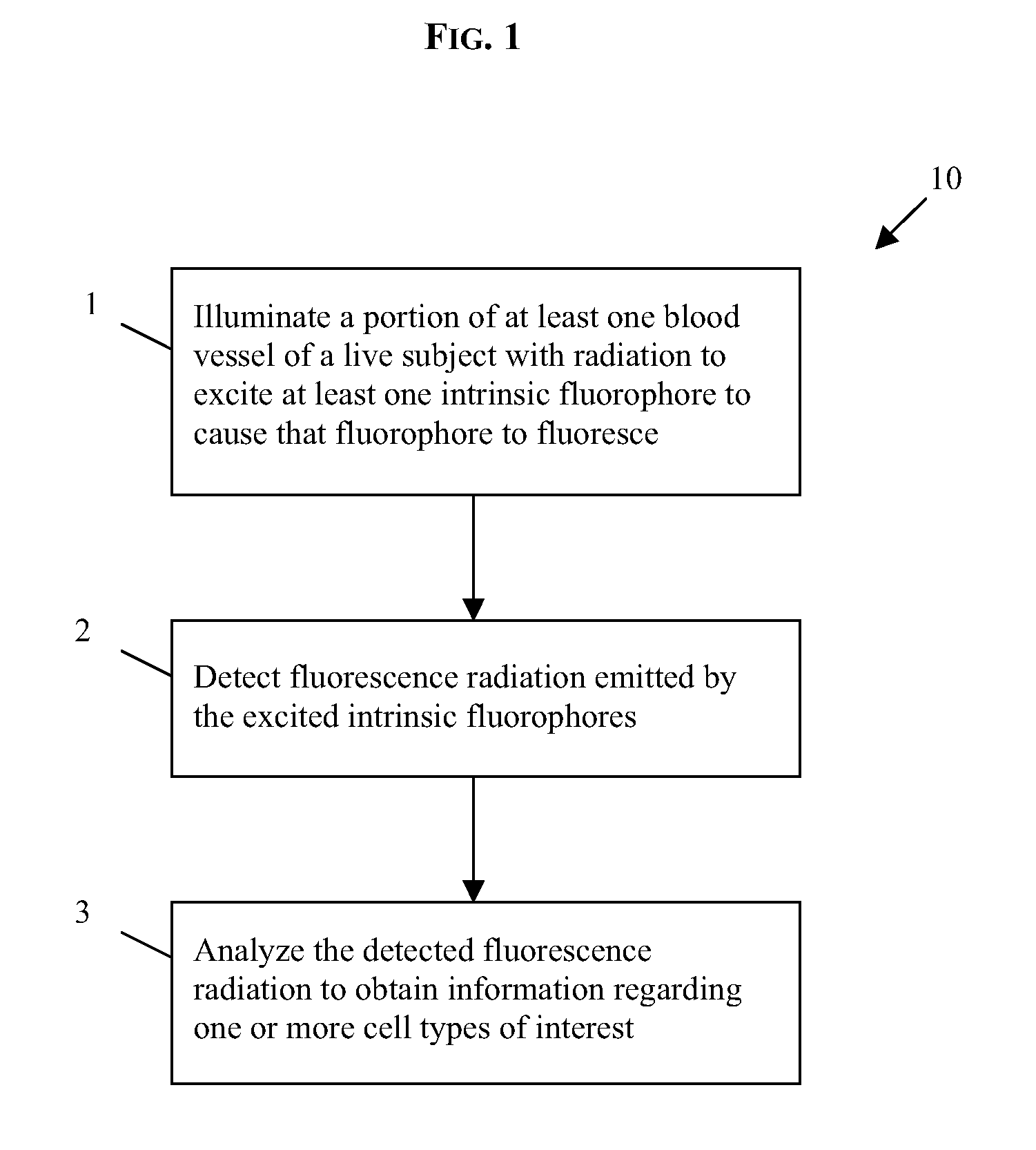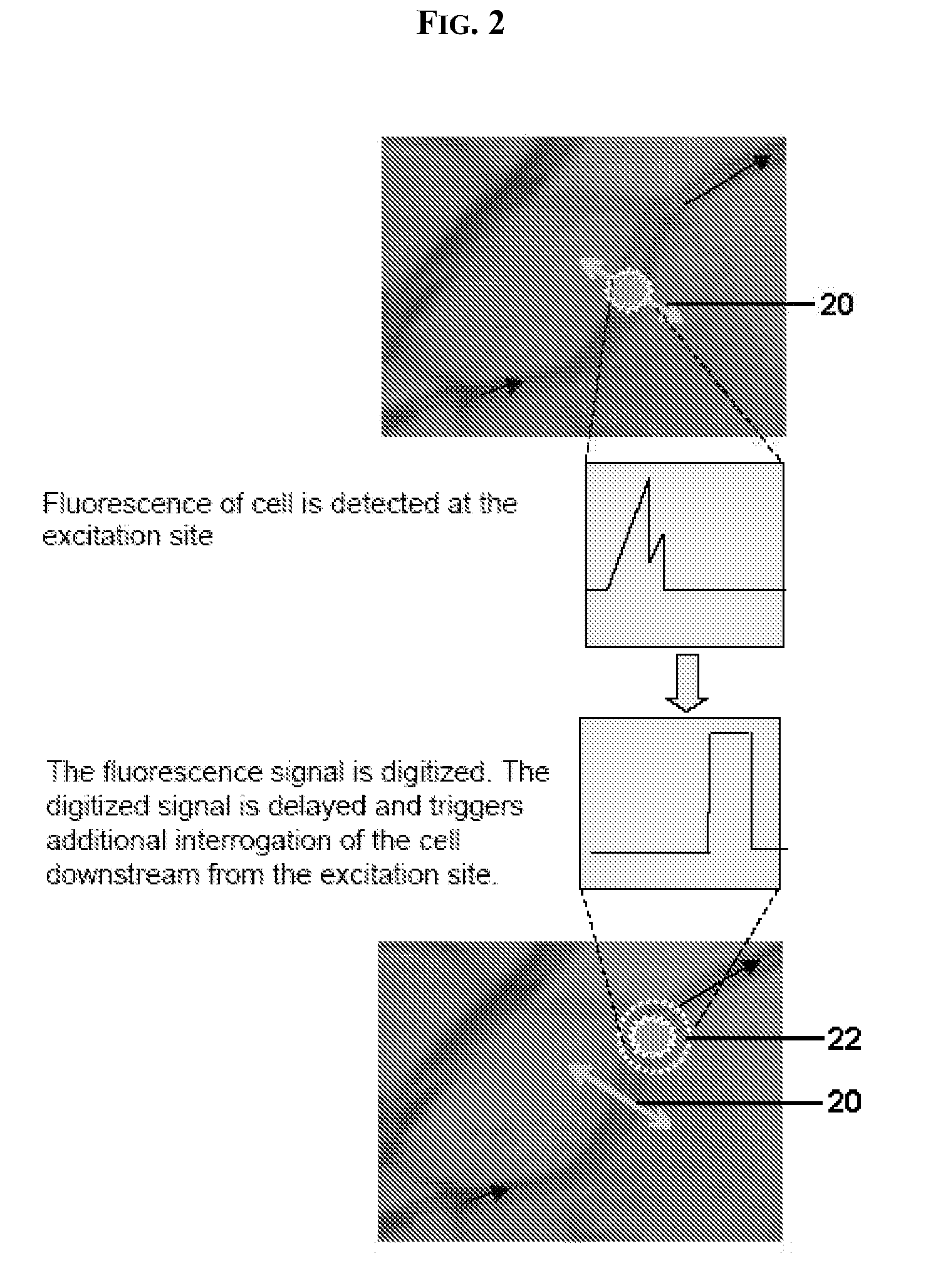In vivo flow cytometry based on cellular autofluorescence
a flow cytometry and autofluorescence technology, applied in the field of flow cytometry based on cellular autofluorescence, can solve the problems of invasive blood withdrawal, inability to monitor the circulation in real time, and difficulty in blood withdrawal in certain patient populations
- Summary
- Abstract
- Description
- Claims
- Application Information
AI Technical Summary
Benefits of technology
Problems solved by technology
Method used
Image
Examples
example 1
A multi-photon microscope was used to capture images of ex-vivo human lymphocytes and in-vivo mouse leukocytes to demonstrate the efficacy of the methods and systems according to the present invention for real-time imaging of cells. The multi-photon microscope used to image the cells was of the type shown schematically in FIG. 7. As illustrated, the two-photon imaging microscope includes a mode-locked Ti:sapphire laser (Spectra-Physics MaiTai-HP, wavelength 750 nm, 100 fs pulse width, 80 MHz repetition rate) pumping an optical parametric oscillator (Spectra-Physics OPAL), which in turn generates 100 fs pulses at a wavelength of 1180 nm. The 1180 nm laser pulses are focused into a β-barium borate crystal (BBO, CASIX USA, 2 mm thick) to generate 590 nm wavelength pulses with 60 mW of power.
The laser beam exiting the β-BBO crystal is deflected into a home-built video-rate (30 frames / second) x-y scanner 144. The scanner 144 includes a rotating polygon reflector 146 for directing the bea...
example 2
A two-photon in vivo flow cytometer (TIFC) similar to the exemplary embodiment shown above in FIG. 5 was used to detect both two-photon tryptophan fluorescence and one-photon DiD fluorescence from stationary DiD-labeled cells. As shown in FIG. 9A, the experimental TIFC system setup was similar to the embodiment shown in FIG. 5 except that a single multi-photon excitation source 74 forms the radiation source. The source 74 was used to excite both two-photon fluorescence of endogenous tryptophan and one-photon fluorescence of exogenous DiD. The source generates laser light with a wavelength of 590 nm and pulse width of 100 fs using the elements schematically shown in FIG. 9B. The source generally includes a femtosecond laser, an optical parametric oscillator, and a frequency doubler. In this experiment, the laser was a mode-locked Ti:sapphire laser (Spectra-Physics MaiTai-HP) that generates ultra-short pulses (100 fs) at a wavelength of 750 nm. This light is then injected into an opti...
PUM
| Property | Measurement | Unit |
|---|---|---|
| excitation wavelengths | aaaaa | aaaaa |
| excitation wavelengths | aaaaa | aaaaa |
| diameter | aaaaa | aaaaa |
Abstract
Description
Claims
Application Information
 Login to View More
Login to View More - R&D
- Intellectual Property
- Life Sciences
- Materials
- Tech Scout
- Unparalleled Data Quality
- Higher Quality Content
- 60% Fewer Hallucinations
Browse by: Latest US Patents, China's latest patents, Technical Efficacy Thesaurus, Application Domain, Technology Topic, Popular Technical Reports.
© 2025 PatSnap. All rights reserved.Legal|Privacy policy|Modern Slavery Act Transparency Statement|Sitemap|About US| Contact US: help@patsnap.com



